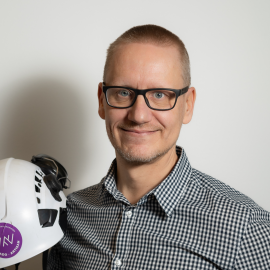Kokkola–Ylivieska double track

About the client and project
The double track project between Kokkola and Ylivieska is part of the Ostrobothnian railway project (Seinäjoki–Oulu). The project’s client is the Finnish Transport Agency, with Tommi Rosenvall as the project director.
The double-track project between Kokkola and Ylivieska includes 80 km of new track and 80 km of modernisation of old track, 80 bridges and a total of 100 km of highways, streets, private roads and service roads. The project also involves weak soils, bulkheads and pile slabs (e.g. the realignment around Sievi and work in the village of Kannus).
The project also encompassed the construction of a new digital based railway signalling system, 80 km of new electric line and an upgrade for 80 km of the existing electric line.
Challenges and problems involved
The preparation of documents for design-build contracts: Contracts based on the design-build approach are not that common in railway projects, and suitable documents had to be created in connection with this project.
The stringent schedule and budget posed challenges for the project. The project also included several technically demanding elements, such as crossovers, weak soils, pile slabs and bridges.
Additional challenges came from having to take train traffic into account during the project and work adjacent to the active track. The limited number of professional contractors was also an issue.
The project involved several track crossings where traffic had to be interrupted for the new track superstructure, safety device system and electric railway system to be connected.
Welado’s solutions
The contract types and the scope of the contract areas were determined jointly with the client. According to the original plans, the project was to be completed as three large design and implementation contracts. The first two contracts were implemented based on the design and implementation approach, but procurement of the third one was cancelled and the project was ultimately carried out as three separate substructure and superstructure contracts.
These decisions ensured that the competitive tendering was successful and the contractors professional.
The railway signalling system covered the entire Kokkola–Ylivieska stretch, and the electric railway project for the third section was carried out as a design-build contract.
The contracting consultant specified the land to be expropriated and the detailed work phases. At the planning meetings for the design and implementation contracts, the consultant also steered the choice of design solutions towards cost-effective alternatives with better technical features (e.g. the Sievi pile slabs and the Sikaneva overpass).
The contracting consultant performed close and regular monitoring of the schedule, quality and costs. The expertise of the consultant’s staff was particularly useful for coordinating the technical work performed during interruptions in traffic.
Summary
Thanks to these measures, the project will be completed ahead of schedule and below the cost estimate. The work has progressed as planned during traffic interruptions, and the quality of work has been good. Daily disturbance to traffic has been successfully minimized.
The first two design and implementation contracts were to be partly based on the information model approach. The third contract was based entirely on the information model approach.

